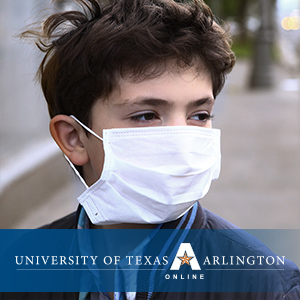
State public health systems are complex organisms. Describing these interconnected networks of institutions, agencies and people can require a definition as big as Texas. The state’s Health and Human Services Commission (HHSC) is the chief authority on public health issues in Texas, but it works with many different types of partners. Hospitals, health clinics, physicians, universities and school districts, insurance providers, professional associations, public safety entities such as police and fire departments, nonprofits, and other community-based organizations are actually all considered part of the state’s public health system.
A Big State With Big Challenges
A number of public health issues impact the lives of Texas’ citizens. They include:
- Communicable and chronic disease
- Tobacco use
- Accidents and injuries
- Maternal and child health
- Environmental illness
- Mental health and substance abuse
- Access to primary and preventive care
Catastrophic weather events, emerging infectious diseases and manmade disasters (such as a pipeline explosion or hazardous chemical exposure) also challenge the state’s public health infrastructure, which must anticipate and respond to these ongoing threats.
While these issues are important to address, in such a vast and diverse state, they are also complicated. Types and rates of disease, illness and injury can vary greatly by city. These issues can also present a different public health challenge in Texas’ many rural and remote communities than they do in its major metropolitan areas.
Weather and climate-related risks are quite different for citizens living in one region of the state than another, too. Texas is spread across more than 260,000 square miles after all, and depending on where you live, a routine year might include tornados, flooding, hailstorms, drought, earthquakes, blizzards, dust storms, and extreme heat or cold. Tropical storms and hurricanes hit Texas more frequently than non-coastal states, and Hurricane Harvey in 2017 was one of the most devastating storms in American history. Many areas of Houston and South Texas have yet to recover from the damaging winds and flooding it brought.
These are just some of the conditions that make Texas a very unique place to live, and some of the reasons that partners across the state’s public health system work together for the benefit of citizens in every community.
Progress in Texas Public Health
To address diverse health issues, and ensure Texans’ safety, public health efforts must be comprehensive and coordinated. State agencies and officials are increasingly partnering with public health authorities and university researchers to share data on health issues around the state and create resources that will help address local needs. Front-line public health workers in government, medicine and the nonprofit community are also teaming up at the local and county level to try and close gaps that have existed in the public health system, and ensure the right resources are available to respond to public health threats and support citizens.
But in a state the size of Texas, there’s always more work to be done. The following are prioritized goals for the state’s public health system:
- Increase rates of childhood immunization and awareness of how immunization benefits individuals, families and communities.
- Reduce obesity and raise awareness of the link between chronic diseases such as diabetes, heart disease and a sedentary lifestyle.
- Reduce tobacco use, enforce smoking ordinances and limit youth access to tobacco products.
- Improve the health and well-being of mothers and infants while reducing risk factors in child health that can impact them across the span of their lives.
- Improve communication and cooperation with Mexican health authorities to prevent chronic diseases and public health threats in border communities.
- Improve prevention and control strategies for more than 50 communicable or high-consequence infectious diseases, including disease testing, monitoring and containment.
- Continue to strengthen and enhance the state’s emergency and trauma care system.
- Increase coordination and communication between state and local public health systems and other authorities to improve disaster and public health crisis response.
- Improve compliance with best practices in food handling and food manufacturing to protect the public from foodborne illness, and investigative processes that can detect the source of an outbreak.
- Reduce rates of preventable hospitalization and infection in healthcare settings, and increase integration of healthcare data for the benefit of patients, such as electronic health records.
Public health professionals in Texas have the satisfaction of knowing that their efforts can help protect citizens living in the vast landscape and growing cities of the Lone Star State. The preparation and skill they bring to their jobs makes a difference to Texans, both in times of crisis and in their everyday lives.
Learn more about UTA’s online Bachelor of Science in Public Health program.
Sources:
Journal of Public Health Management & Practice: Article Index
Journal of Public Health Management & Practice: Developing an Informatics-Savvy Health Department